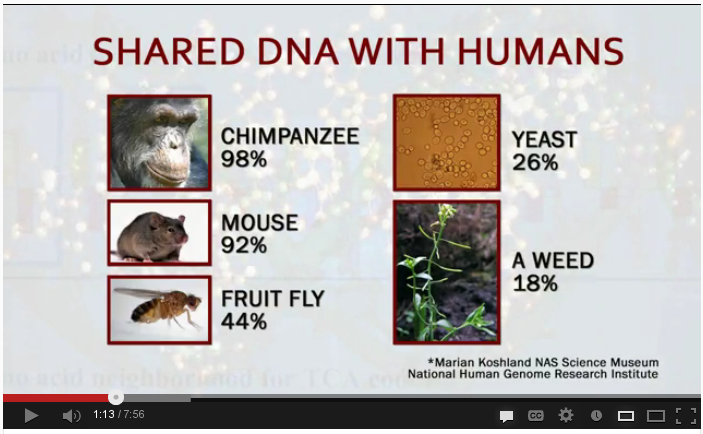In one of the most extensive studies comparing human and chimp DNA,6 the researchers compared >19.8 million bases.
While this sounds like a lot, it still represents slightly less than 1% of the genome.
Wait wait wait...
They only actually compared less than 1% of the DNA?
It's statements like that which take away all of your credibility. The chimp genome was sequenced 7 years ago, and the numbers they use for their comparisons is from way more than just 20 million bases.
"Here we present a draft genome sequence of the common chimpanzee (Pan troglodytes). Through comparison with the human genome, we have generated a largely complete catalogue of the genetic differences that have accumulated since the human and chimpanzee species diverged from our common ancestor, constituting approximately thirty-five million single-nucleotide changes, five million insertion/deletion events, and various chromosomal rearrangements."
http://www.nature.com/nature/journal/v437/n7055/full/nature04072.html
So 35 million substitutions and 5 million indel events. This means that substitutions are 7 times more common indels, but indels can cover more than one base. This is why you get different numbers because it depends on how you use indels in your calculations. Do you count the number of bases in the indel, or do you count the indel once as a one time event? Do you leave the indels out entirely in order to calculate the substitution rate within DNA shared by both species? There are reasons for doing each comparison, and it has nothing to do with misleading creationists.
Upvote
0



